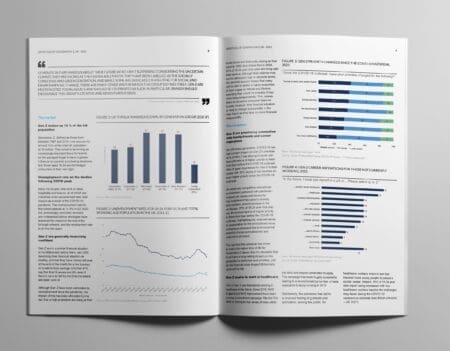Amazon Prime Day is set to launch on Monday, July 16th. Here, Mintel Analysts, Alexis DeSalva and Matt Lindner share their perspective on what’s in store this year.
 Alexis DeSalva, Senior Retail and eCommerce Analyst, US
Alexis DeSalva, Senior Retail and eCommerce Analyst, US
Since its inception, Prime Day has been a chance for Amazon to spotlight its own merchandise, especially on big-ticket items like the Kindle and Amazon Echo devices. Those items will likely still play a role in Prime Day offers, but Amazon will likely use this year’s event to push some of its other, perhaps lesser known, private brands especially in categories like apparel.
Amazon has been working to expand its fashion footprint by growing brand partnerships and quietly introducing a number of private labels in categories like women’s clothing, men’s underwear and children’s clothing. We expect to see a Prime Day emphasis on Prime Wardrobe, its newly launched service which allows shoppers to “try before they buy” by selecting three or more clothing and accessory items, trying them on at home within seven days, and keeping only the items they love, returning the rest for free. It’s interesting to note that Prime Day is happening soon after Prime Wardrobe launched to all members.
Prime Day speaks to the deal-seeking and time-saving behavior many consumers possess. In addition to planning ahead, many consumers like to treat themselves and could be using events like Prime Day to splurge while also stocking up on gifts for others. Consumers may be more inclined to adopt a “treat yourself” mentality during such sales events because they can rationalize self-gifting if the deal is worthwhile.
Competitors aren’t going to sit still and watch Amazon walk off with all the sales, and that will likely result in retailers across many channels looking for ways to win shoppers’ attention. Even competitors in categories that might not view Amazon as a large threat, such as apparel or home furnishings, have already made their own attempts at echoing Prime Day earlier in the year in an attempt to get ahead. In April, Wayfair launched its first ever WayDay event, which was a one-day sale offering Black Friday-like deals, while JCPenney ran a similar campaign over a weekend in early May. Others will likely follow suit with their own iterations of Prime Day throughout the year, but many will likely feel the pressure on actual Prime Day and be compelled to offer similar savings to compete. Some retailers, such as eBay and Kohl’s, have already responded, announcing their own sales events running prior to or in conjunction with Prime Day, featuring limited-time deals or exclusive access for cardholders. It’s likely additional events from other competitors will emerge in the days leading up to July 16th.
 Matt Lindner, Senior eCommerce Analyst, US
Matt Lindner, Senior eCommerce Analyst, US
The first three Prime Days were about selling consumers what they want. This year, Amazon is going to heavily promote products that consumers need by putting Whole Foods front and center. Amazon is already discounting grocery delivery orders from Whole Foods through Prime Now to encourage more Prime members to try the service. Whole Foods is going to play a heavy role this year particularly because online grocery remains the one product category that Amazon hasn’t conquered just yet. According to Mintel US Research on how consumers discover products online, Amazon trails grocery retailers and mass merchandisers when it comes to online channels that consumers use to learn about food and drink products.
In the past, grocery retailers were free to sit Prime Day out because consumers weren’t thinking about buying their groceries online. Now? With nearly three out of ten Amazon shoppers and 42% of all Millennials who shop on Amazon saying they are more likely to shop on Amazon now that it owns Whole Foods, other food and drink retailers cannot afford to remain idle. There has also been an influx of marketing toward Amazon shoppers about buying groceries online, so look for other grocers to offer limited time online deals in order to capitalize on the fact that consumers are more likely to at least thinking about online food shopping.
Mintel’s data shows that household products and personal care items rank among the highest in terms of product categories that consumers haven’t purchased online, because consumers prefer to buy those products in-store. Encouraging consumers to buy need-based products that they replenish is key to earning more of their online spending, since replenishment can lead to consumers shopping with an online retailer more frequently and making additional purchases on future shopping trips.
Amazon has also heavily promoted sales of its Alexa-enabled, voice-activated Echo devices on Prime Day 2017 as well as during the 2017 winter shopping holidays. Mintel’s US Research on competing with Amazon shows that less than 10% of all Amazon shoppers use those devices to shop on Amazon.
Voice commerce remains in its infancy. With giants like Amazon and Google aggressively pushing sales of and through voice-activated devices, voice commerce is poised to grow quickly. Prime Day gives consumers an opportunity to dip their toe in the voice-based ordering waters by ordering heavily discounted products so they can see whether or not they like the experience. The popularity of voice-based ordering on Prime Day will be a good barometer of just how far off in the distance voice commerce is from becoming as mainstream as offering products through mobile websites or apps.
Alexis DeSalva is a Senior Research Analyst at Mintel. Alexis focuses on US Retail and eCommerce reports.
Matt Lindner is a Senior eCommerce Analyst at Mintel. He has covered Prime Day extensively since its inception.












 Alexis DeSalva, Senior Retail and eCommerce Analyst, US
Alexis DeSalva, Senior Retail and eCommerce Analyst, US Matt Lindner, Senior eCommerce Analyst, US
Matt Lindner, Senior eCommerce Analyst, US























